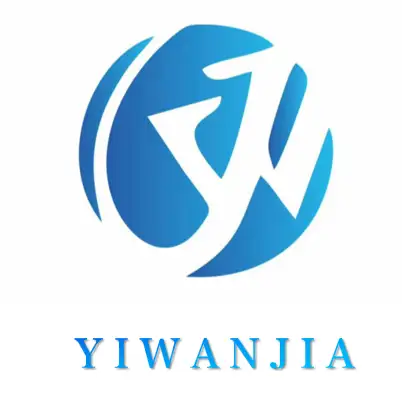OSB
OSB (Oriented Strand Board) is a high-strength, multi-layer artificial board made by bonding oriented wood chips under high temperature and high pressure. It is widely used in fields such as architecture, furniture manufacturing, and packaging, and has excellent mechanical properties and stability. Compared with traditional particleboard, OSB has significant differences in raw materials, structure, performance, and environmental friendliness. The following is a detailed comparison and production process analysis:
| Name | OSB |
|---|---|
| Size | 1220x2440mm,1250x2500mm,1250x3000mm,1525x1525mm 1525x3050mm or as Customized |
| Thickness | 2~30mm |
| Face/Back | Pure,Melamine,HPL,PET, |
| Core Material | OSB ,MR OSB,Fire-proof OSB |
| Grade | OSB1,OSB2,OSB3,OSB4 |
| Glue | E0,E1,E2 |
| Moisture Content | 7%-16% |
| MOQ | 1*40HQ |
| Density | 650-900kg/m3 |
| Usage | Furniture,Laser Die Cutting,Toy,Loud Speaker,Construction,Flooring,outdoors ,House,etc |
Definition and Characteristics of OSB
1. Definition
OSB (Oriented Strand Board, also known as OSB) is a high-strength structural board made from fresh wood (such as pine, poplar, etc.), which is peeled, sliced into 40-120mm long, 5-20mm wide, and 0.3-0.7mm thick wooden pieces, dried, glued, and oriented (surface longitudinal, core transverse), and then hot pressed into shape.
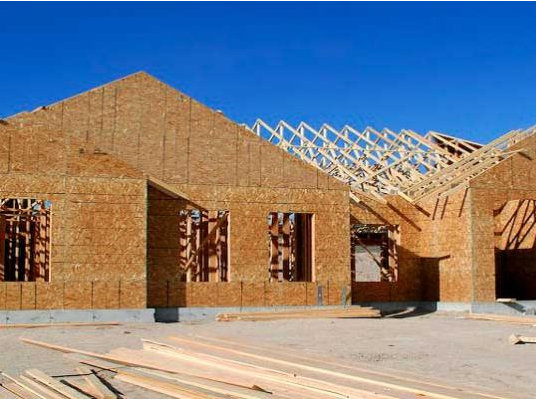
2. Main features
High strength: Directional paving makes the board have bending and shear strength close to plywood, far higher than ordinary particleboard.
Good stability: The criss crossing wood chip structure reduces expansion and deformation, making it suitable for environments with large temperature and humidity changes.
Excellent moisture resistance: Some OSB (such as OSB-3, OSB-4) use waterproof adhesives, which can be used in humid environments.
High environmental friendliness: High quality OSB uses formaldehyde free MDI adhesive (isocyanate adhesive), with extremely low formaldehyde emissions (ENF grade).
Good processing performance: Strong nail grip, can be sawed, drilled, and milled, suitable for use in furniture and building structures.
Production process
The production process of OSB mainly includes wood processing → planing → drying → gluing → paving → hot pressing → post-processing, as follows:
(1) Wood processing
Select small-diameter materials with a diameter of 8cm or more (such as pine and poplar).
Peeling (rotary or drum type peeling machine), bark can be used for fuel 10.
(2) Slices
Use a disc or ring planer to cut the wood into thin slices of 40-120mm in length and 5-20mm in width.
(3) Drying and screening
The wood chips are dried by hot flue gas, and the moisture content is reduced to 2% -4%.
Filter and remove fine particles (5% -15% fine particles used as fuel) 10.
(4) Glue application
Use MDI adhesive (environmentally friendly) or phenolic resin adhesive (waterproof) 4.
The adhesive dosage is about 5% -8%.
(5) Directional paving
The surface wood chips are arranged vertically, and the core layer is arranged horizontally, forming a three-layer cross structure.
The paving machine ensures even distribution of wood chips and increases the strength of the board by 5.
(6) Hot pressing
Using a continuous press (ContiPress) ™) Or multi-layer hot press machine, temperature 180-220 ℃, pressure 3-5 MPa.
The density of the board after hot pressing is about 600-700kg/m ³ 3.
(7) Post processing
Cooling, trimming, sanding (some OSB do not require sanding) 10.
Some products are veneered (such as melamine veneer).
Development Trends
Environmental upgrade: The market share of formaldehyde free OSB (MDI adhesive) has increased by 7.
High performance OSB: such as moisture-proof OSB-4 and high-density OSB used for load-bearing structures.
Alternative plywood: OSB has extensively replaced plywood in Europe and America, and the domestic market is also growing rapidly.
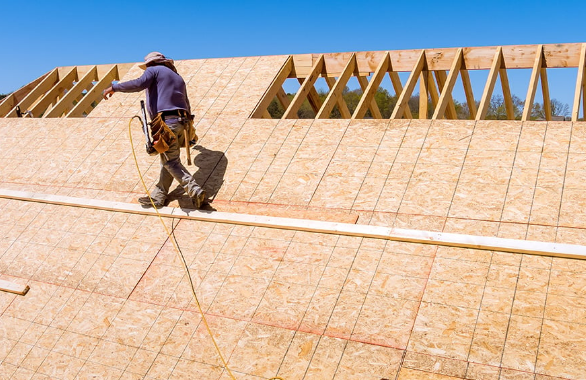
| Type of OSB | |||
|---|---|---|---|
| Grade | bearing capacity | moisture resistance | Main purpose |
| OSB1 | Non load bearing | not waterproof | Dry environment decoration and packaging |
| OSB2 | Load bearing (dry) | not waterproof | Furniture, indoor partitions |
| OSB3 | Load bearing (damp) | waterproof | Building templates, floor substrates |
| OSB4 | High load-bearing capacity (humid) | High waterproof | Wooden houses, load-bearing beams |
Usage
Furniture manufacturing: cabinet doors, drawer panels, TV background walls (due to easy carving and shaping).
Interior decoration: skirting board, door frame, wall panel, ceiling.
Customized craftsmanship: photo frames, toys, models (easy to cut and polish).
Audio equipment: speaker enclosure (with uniform density to reduce resonance).
Note
Avoid using in damp environments (such as bathrooms, outdoors) unless choosing moisture-proof MDF (green label) or waterproof MDF (HMR grade).
Wear a mask during cutting to prevent inhaling wood fiber dust.
Edge sealing treatment can extend the service life and reduce formaldehyde emissions.
If higher strength or waterproof performance is required, HDF (high-density fiberboard) or plywood can be considered.
Type
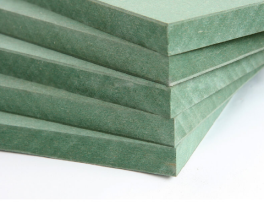
Moisture-resisitance MDF
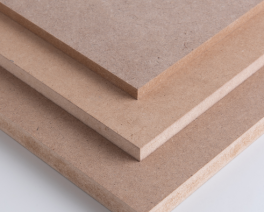
MDF
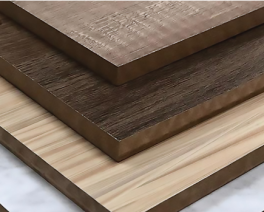
MDF with Melamine paper
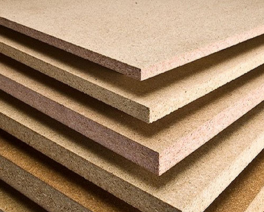
LDF
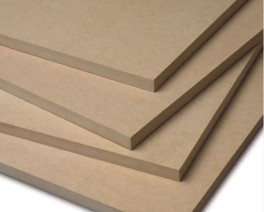
HDF
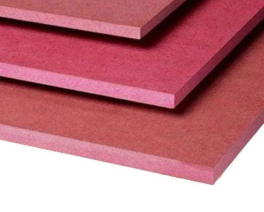
Fire-proof MDF
Grade :
1. OSB1
Purpose: Non load bearing board for general use. Applicable environment: Only suitable for indoor decoration and furniture production in a dry state, such as packaging, enclosures, etc. Features: Not waterproof, low strength, and affordable price.2. OSB2
Purpose: Carrying board, suitable for dry environments. Applicable scenarios: Decoration industry: home partition, building decoration (can replace particleboard, multi-layer board) 16. Furniture industry: cabinets, bookshelves, etc. Features: Higher strength than OSB1, but still not suitable for humid environments.3. OSB3
Purpose: Carrying board, suitable for wet conditions. Applicable scenarios: Construction project: interior and exterior wall panels, floor slabs, concrete formwork 45. Flooring industry: Base material for solid wood composite flooring (replacing density board and plywood) 16. Packaging industry: Aseptic export packaging (fumigation free, moisture-proof and pressure resistant) 5. Features: Using waterproof adhesive (such as melamine adhesive) with good moisture resistance, it is currently the most commonly used OSB grade 7 on the market.4. OSB4
Purpose: Load bearing board, suitable for wet conditions. Applicable scenarios: Building structure: load-bearing beams for the house, wooden villa 47.Contact us for free sample
- WhatsApp: +8616506393789
- plywood@yiwanjiawood.com
- Room 1008, Block A, Phase I, Yigao Shanghai Street, Lanshan District, Linyi City, Shandong Province
